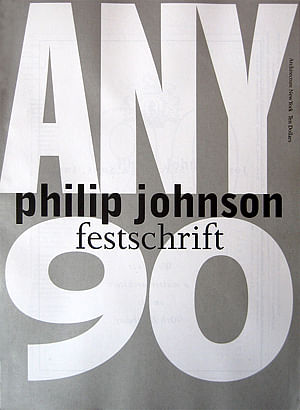
Alison Cuddy of WBEZ 91.5 reported that the Save Prentice Coalition has made the case that re-using the former Prentice Hospital could mean more money, jobs...curtkram was puzzled "hmm. i used to live on the north side of chicago and i don't recall ever seeing this building. anyway, aside from preserving this building because of it's characteristic of a historic style, or because some particularly important person thinks it looks cool, there is a good argument for sustainability".
Archinect finished reflecting back on the 2012 most trafficked pages in Archinect's diverse online ecosystem, with a list of 12 top 12 lists for '12. As always, they listing the most popular pages from across the site, based exclusively on visits by unique page-views. We completed the look-back by publishing the; Top 12 Blogs for '12, Top 12 Blog Posts for '12, Top 12 Live Blogs for '12, Top 12 Projects for '12, Top 12 Firm Profiles for '12, Top 12 People Profiles for '12, Top 12 School Profiles for '12, Top 12 Jobs for '12, Top 12 Competitions for '12 and finally the Top 12 Discussions for '12.

News
Alison Cuddy of WBEZ 91.5 reported that the Save Prentice Coalition has made the case that re-using the former Prentice Hospital could mean more money, jobs. The reuse alternatives for the Bertrand Goldberg-designed Prentice Hospital were unveiled at a press conference on January 3, 2013. You can view the presentation here (PDF file).
mantaray corrected Thayer-D "First of all, it isn't just architects calling for the preservation of this building; there are a LOT of 'the public at large' calling for it also (and they HAVE been manning the barricades). This conversation has been going on for a long time in Chicago, and yes, there are some folks who think that the building has no merit at all; there are some who personally don't like it but believe it should be saved; and there are some who both like it and believe it should be saved. These opinions cross a wide segment of the public". curtkram was puzzled "hmm. i used to live on the north side of chicago and i don't recall ever seeing this building. anyway, aside from preserving this building because of it's characteristic of a historic style, or because some particularly important person thinks it looks cool, there is a good argument for sustainability".
vada retro deadpanned "This building will live on in photographs and articles". Thayer-D suggested "Whoever that perrenial guy was, he had as much right to have his say as Rem Koolhaus, but the way some people jumped down his throat bothered me. It reminded me of my own education at Pratt when I became interested in studying the older fabric all around me only to be told I was a nostalgic schmuk".
Sarah Amandolare explored whether Will Biomimicry Offer a Way Forward, Post-Sandy? To answer the question she spoke with scientists, architects and other design profesionals.
A.Gann believed "As we begin to delve into the opportunities of Biomimicry, we should look at the urban systems as parts of an organism that symbiotically functions as an adaptable set of structures" while davvid wondered "Why even bother with the ‘bio’ metaphor? Why not just create buildings that respond to needs and conditions? Buildings and cities are not actually organisms, so why add this layer of earth mother mysticism?".

"So here,” said Gordon, stamping on the deck, “here is where we are going to put the house: you just line it up with that picture window. It’s about twenty feet down to stone. You saw the steel coming in? I thought we could weld it first on shore and tow it out. We’ll frame it just like an oil derrick. Thirty feet of welded steel cage — or I suppose we could bolt it up in pieces. The house just goes on top, a few feet above flood line. That steel is strong, and it should hold up my stone house. So here’s my question: can you figure that cage out for me?” It was heart-breaking. Gordon paid me in cash, which he gave me in an unsealed envelope.”
Steven Ward couldn't help but comment "a weird and wild ride between grain-and-splinters specificity and irresponsible stereotyping generalities. i guess the former are supposed to make us overlook the latter? anyway, this was entertaining - and the commission he describes intriguing...architects, when writing about architects, often fall into criticisms of architects that make us look bad to those outside the profession. i wonder why that is”.
Universitat Politècnica de Catalunya announced they have made a breakthrough in concrete in which "The innovative feature of this new (vertical multilayer) concrete is that it acts as a natural biological support for the growth and development of certain biological organisms, to be specific, certain families of microalgae, fungi, lichens and mosses". Connely Farr quipped "#chiacrete . my word. just made it up".
Firms/Blogs/Work Updates
Sondre_M started Bleed a blog about design and architecture, and the points where they overlap. How they inspire each other, and can inspire each other. Often based around graphic design, but also around architecture, service/interactive design and industrial design.

Wiel Arets Architects provided an update regarding the under construction Anne van Bueren Square project which serves as the lobby for AvB Tower.

Barkitecture Mag recently worked on NRA sanction(ed)s new nursery school design prototype and Ronaldo Pacheco recently worked on his Thesis Project.
amlocke is apparently still making his way across India by train. He had a chance to visit the Taj Mahal and writes about his experience "And alas we reach the climax, the zenith of a journey and the symbol of a country. When one hears the name India uttered, it is the like image in all minds of which transpires. ..If one has not the image in mind to which I speak, I applaud ones bohemianism in refusing to ever read a travel magazine, frequent an Indian restaurant or surf the Internet".
AwesomeArchitecture posted pictures of apartment(s) part of a hotel and entertainment complex located in a picturesque corner of the pine forest in the Poltava Oblast, Ukraine, designed by YOD Design Lab.
Schools/Blogs

hsolie catches us up with a post on Apophenic Ecologies, last fall’s studio, at the University of Michigan Taubman College of Architecture, with Adam Fure and visiting professor Matias del Campo. The following passage is typical for the post;
"In order to generate apertures in the Cairo tessellation panels, computational design strategies were utilized to randomly generate top and bottom curves which would then be fed to the fabrication software in order to generate Boolean operations. Through these efforts a minimum amount of parametric modeling was needed in order to generate aperture rich architectural prototypes"...

FRaC questioned "so where are the '.. multiple readings within a single spatial environment.'? to me you generated a lot of same-ness when i was expecting to see a lot of different-ness from within the aforementioned single spatial environment" but Daniel Ellmore replied "(@FRaC) There is a condition of ‘sameness’, but that sameness is establishing a ‘systems’ within which variations can be distinguished and read. Just like letters are always the same, but variations in their order create a variety of readings. (@Harold) I think your argument is fullproof, I'm just curious as to the types of readings that this is producing".


As promised Matthew Messner gave us a look at the final product from a Fall 2012 Sam Jacob and Jimenez Lai's Repitition Studio, at the School of Architecture at the University of Illinois Chicago. Again FRaC critiqued "it's like PoMo put through a libeskind 'chamber works' filter. i've had nightmares like that first image, and i mean that in a good way". For their part lletdownl felt "you should probably make posters of that first image... i would love to see this thing montaged in context... there are some fantastic blank lots not far from your campus i could envision this being pretty impactful".

Discussions
thanhmai171 is looking to learn ecotect and wants to know what the difference is between ecotect and vasari in energy analysis ? thakopian thought "Ecotect is environmental analysis software for things like lighting and sound in rooms. Vasari does similar things but is meant to be designer friendly with experimental systems. It's also a bim software whereas Ecotect is not" but Amy Leedham opined "Ecotect has more functionality than Vasari for detailed analysis (although the thermal analysis in Ecotect is not trustworthy) but Vasari is more easily integrated into your workflow. If you are not an engineer or have a degree in building science I would highly recommend against trying to do thermal analysis.."
jp22 is looking for information on the latest trends in hospital design. b3tadine[sutures] asked for clarification "Specific? The topics you raised could fill 1000 notebooks. I just read a piece in Fast Company about the changing nature of hospitals...Plenty of established firms are writing white papers about the changing nature of health care”.
Again Amy Leedham chimed in "I did my dissertation on this topic.. generally there is a shift in literature and healthcare ‘theory’ towards healing and away from the modern approach of efficiency...there are some pretty interesting examples of private hospitals in Europe that are starting to propose some more interesting strategies”.

Finally, 3west was looking for an old image of Rem Koolhaas visiting the Glass House. FRaC helpfully posted "was looking for this recently, too! i used to own the magazine this was published in but i can't find it. and i've googly-searched all sorts of rem/p.j./glass house combinations but can't find it online, either. it looks like the back issue is still available, if you want to burn $20 -> http://www.anycorp.com/any/magazine/15"
Additionally
Diane Ackerman recently wrote about the architectural possibilities of human body heat in The Power of a Hot Body. Her examination ranged from savvy architects from Paris Habitat, who decided to borrow the surplus energy from so many human bodies and use it to supply radiant under-floor heating for 17 apartments in a public housing project, to Stockholm’s Central Station, where engineers have harnessed the body heat issuing from 250,000 railway travelers to warm the 13-story Kungsbrohuset office building about 100 yards away. She praised "This ultra green, almost chartreuse, body-heat design works...Part of the appeal of heating buildings with body heat is the delicious simplicity of finding a new way to use old technology (just pipes, pumps and water)".
No Comments
Block this user
Are you sure you want to block this user and hide all related comments throughout the site?
Archinect
This is your first comment on Archinect. Your comment will be visible once approved.